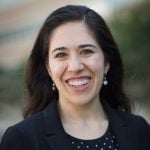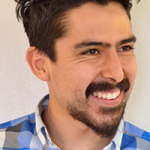Data that comes from a union of subspaces is prevalent in important applications such as face clustering, motion segmentation, and multi-view geometry in computer vision. Although many powerful approaches have been designed to handle such data, challenges still remain such as handling noise and missing entries in the data, imbalance of data across classes, heterogeneity in the data, and scalable algorithms to handle modern large scale datasets, to name a few. This mini-symposium will present recent advances in subspace learning and clustering which use tools from algebraic geometry, statistics, sparse and low-rank representation, and machine learning to address the aforementioned challenges.
Organizers
Daniel Robinson Rene Vidal

Lehigh University US
Johns Hopkins University
To view all the mini-symposium presentations please watch the following video
Speakers
 Yi Ma, University of California, Berkeley, U.S. |  Madeleine Udell, Cornell University, U.S |  Richard J. Kueng, California Institute of Technology, U.S |  Chong You, University of California, Berkeley, U.S. |
 Daniel Pimentel-Alarcón, University of Wisconsin, Madison, U.S. |  Mahdi Soltanolkotabi, University of Southern California, U.S |  John Lipor, Portland State University, U.S |
Agenda
| Time | Speaker | Affiliation | Title of Presentation |
|---|---|---|---|
Monday June 22 |
|||
| 11:00 | Yi Ma | University of California, Berkeley | Complete Dictionary Learning via L4-Norm Maximization over the Orthogonal Group |
| 11:30 | Madeleine Udell | Cornell University | Imputing Missing Data with the Gaussian Copula |
| 12:00 | Richard J Kueng & Joel A Tropp | California Institute of Technology | Binary Component Decomposition |
| 12:30 | Chong You | University of California, Berkeley | Scalable Elastic-Net Subspace Clustering |
| 1:00 | Daniel Pimentel-Alarcon | University of Wisconsin, Madison | Fusion Subspace Clustering for Missing Data |
| 1:30 | Mahdi Soltanolkotabi | University of Southern California | Denoising via Early Stopping: Towards Demystifying Deep Image Priors |
| 2:00 | John Lipor | Portland State University | Clustering Quality Metrics for Subspace Clustering |
